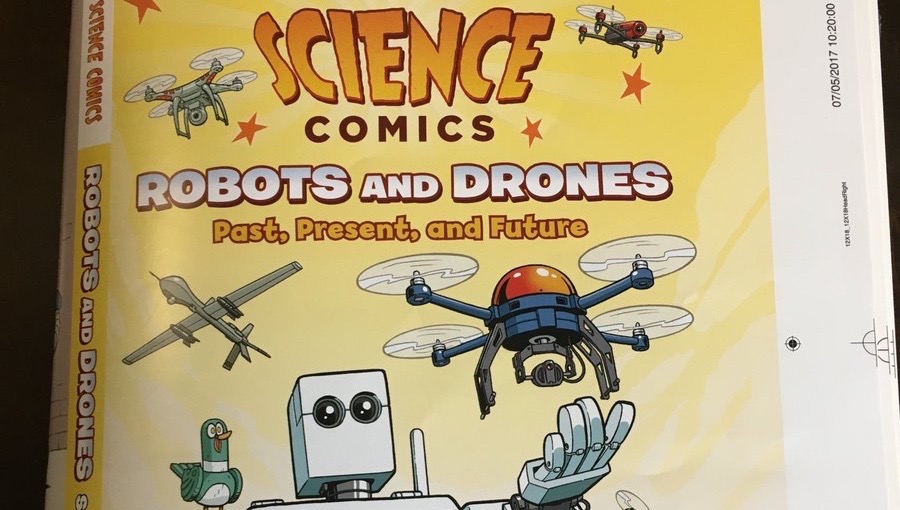I would have loved this comic when I was a kid. A fun, comprehensive look at what robots are and their place in both science and society, it’s packed with robot facts, history, examples, instructions, and more. It’s exactly the sort of thing that would have captured my young imagination and inspired me to want to go out and build robots of my own—possibly a whole army of robots programmed for world domination, because I was an ambitious and somewhat disturbed child. But I digress.
We begin with Pouli, a bird automaton from 350 B.C. who was designed to fly on its own—but not very well, or very far. Pouli the bird then becomes our guide through the world of robotics, giving a clear definition of just what constitutes a robot and providing adorably anthropomorphized examples to illustrate different facets and functions of robot-ness.
I’m not sure I totally agree with the definition the comic gives of what a robot is: “A machine that senses something about its environment, makes a choice about what it senses, and performs an action in response.”
By those criteria, a lot of things fall into the category that most people wouldn’t consider to be robots, such as a coffeemaker or a carbon monoxide detector (both of which make appearances in this comic). Likewise, a lot of things that are generally considered to be robots are excluded: specifically, many of the automata designed by Renaissance engineers such as Da Vinci, which performed complex tasks but didn’t sense their environment.
Still, I understand why the definition was given that way. For something meant to be educational, you need specific criteria for what is and isn’t a robot, and the dictionary definitions tend to be a bit vague and difficult to pin down.
The comic takes us through the history of robotics, beginning with the very first robots and automata in places like ancient Greece, 17th century Japan, and more. We see how they’ve developed over time, how we use them in our everyday lives, and how more complex robots are revolutionizing science and technology.
As I mentioned before, each of these robots is anthropomorphized. Even the ones that aren’t designed to look like living creatures, like the coffeemaker and the carbon monoxide detector, are given faces and voices. In fact, each robot has its own personality, which stems both from the silly but informative writing style of Mairghread Scott and from the vibrant, detailed art of Jacob Chabot that’s often reminiscent of children’s cartoons.
After covering the history of robots, all the way up through the present, we’re given a basic overview of how they work, as well as tips on how to build one and where one might be able to go locally to get practical experience with robotics. The comic covers drones a bit, too, but they’re not as much a focus.
At the end of the comic, there’s a list of famous robots throughout history and what you need to know about them, from Elektro, the smoking robot at the 1937 World’s Fair, to the Spirit and Opportunity rovers on Mars, and many others. There’s also an overview of how drones work and, finally, a glossary of terms.
Robots & Drones includes just about everything that an inquiring young mind would need to learn about and potentially begin building robots. The information is given simply, but not oversimplified to the point of being patronizing. Adults can certainly enjoy this comic, too, and will probably learn a few things from it. I know I did. But if you have or know a child with even a passing interest in robots, drones, and similar types of machines, then I highly recommend you give them this book.
Creative Team: Mairghread Scott (writer), Jacob Chabot (illustrator)
Publisher: First Second Books
Click here to purchase.

